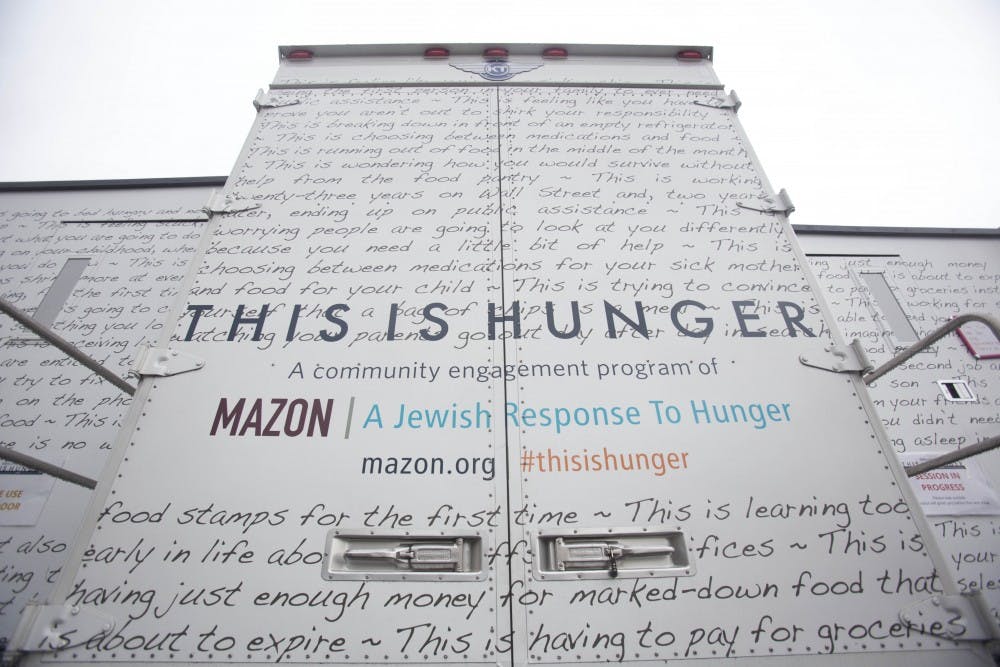Despite living in a developed country, a significant number of Americans suffer from
food insecurity — a term used to denote the state of someone or a group of people who do not always have access to enough food. According to the USDA, in 2016, 12.3 percent of households in America were food insecure, with that number rising to 16.5 percent in families that had children under the age of 18. This means that 41.2 million people were food insecure at some point during the year and an estimated one in five children will go hungry.
Hunger is a debilitating state that, according to the American Psychological Association, can have severe negative effects. In children, hunger stunts their physical and mental growth, and also acts as an inhibitor for their focus. In adults, it can induce severe stress, anxiety and lead to malnutrition if continued over time. These illnesses, in turn, have their own plethora of effects on behavior, development and mental health, according to the APA.
To address this important problem, Challah for Hunger, along with the Brody Jewish Center and the University’s Food Collaborative, partnered with MAZON, a Jewish nonprofit that works to reduce and educate about hunger. Together, they hosted “This Is Hunger,” an interactive exhibit designed to educate others about hunger and ways to help address it in the immediate community around them.
“Not enough people know that hunger is still a very prevalent issue in our communities,” said Raquel Moya, a fourth-year Engineering student and education and advocacy chair for Challah for Hunger.
MAZON is a nonprofit organization that helps advocate for public policies that eliminate hunger through projects, campaigns and exhibits. The mobile “This Is Hunger” exhibit was housed in an 18-wheeler semi-trailer truck, fitted to teach participants about the presence of food insecurity around them and how they can address it.
According to Moya, addressing the ever-present issue of hunger does not have to involve producing more food — instead, it’s an issue that lies in proper distribution. America produces more than enough food to feed its citizens, but it doesn’t always reach the people who need it, either due to monetary or situational hindrances. Those who go hungry may have lack of mobility or may not receive benefits from national programs like the Supplemental Nutrition Assistance Program, a program that provides food to low-income families.
“It’s very solvable,” Moya said. “In the U.S., we have more food than can be eaten ... a lot of food goes to waste, and it’s a problem of distribution and I think it’s a problem of wealth disparities.”
According to Business Insider, America wastes millions of pounds of food each year — an amount that could be directed to those in need. However, due to monetary and distribution reasons, it goes uneaten and simply goes to waste, said Paul Freedman, an associate politics professor and a founding member of the University’s Food Collaborative.
The MAZON exhibit brought that struggle to life. After being featured in big cities such as Miami, Boston, Dallas, Philadelphia and Chicago, the MAZON exhibit was open in the John Paul Jones Arena parking lot from Nov. 5 to 8. The exhibit, meant for the general public over the age of 12, was designed to help spur action to bring the number of food insecure families down to zero.
There was a 45 minute tour featuring two parts — a presentation where guests heard the real stories of people struggling with hunger and a second hands-on portion where attendees participated to learn about and expand their awareness.
“It provides a perspective, a side of the story, that might otherwise be elusive,” Freedman said.
Moya emphasized the uniqueness of MAZON’s exhibit, noting that how the exhibit presents may be advantageous in explaining what statistics cannot.
“I don’t really know anybody else doing something like this,” Moya said. “It’s sort of like an interactive exhibit that I think will better explain the complexities of hunger in the U.S. than you could find just looking at data online.”







